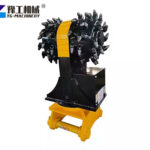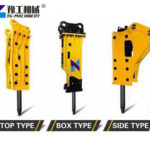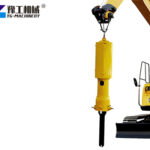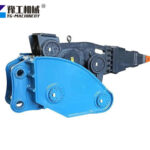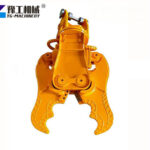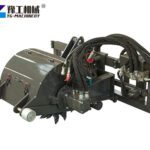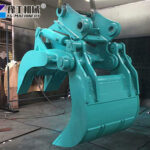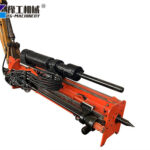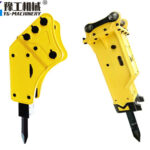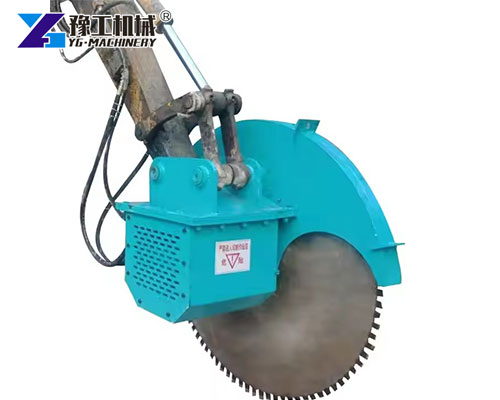
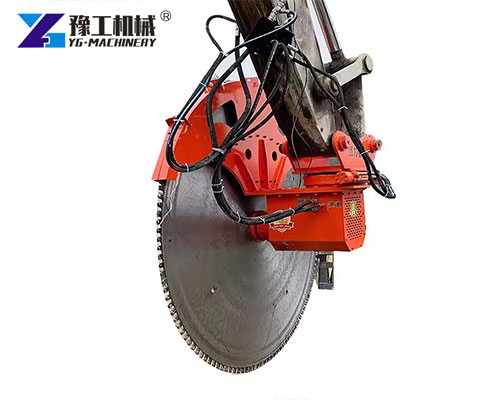
The Hydraulic Rock Saw is a heavy-duty cutting attachment designed for excavators to slice through rock, concrete, asphalt, and other tough materials. Equipped with a large circular blade powered by hydraulic flow, this tool offers high precision and control in environments where blasting or hammering may not be feasible.
Often used in trenching, demolition, and infrastructure projects, the rock saw minimizes vibration and dust, making it suitable for work in populated or sensitive areas. WhatsApp/WeChat/Phone: 86 138 3715 9132
Parameters of Hydraulic Rock Saw for Excavator
| Model | YG 04 | YG 06 | YG 08 | YG 10 |
| Oil Flow | 70L/min | 110L/min | 170L/min | 260L/min |
| Torque | 600nm | 600nm | 1923nm | 3100nm |
| Continuous Rotation Speed | 1-650rpm | 1-650rpm | 1-550rpm | 1-500rpm |
| Rotation Way | Fixed or 360° | Fixed or 360° | Fixed or 360° | Fixed or 360° |
| Weight | 200/260kg | 350/450kg | 500/600kg | 500/700kg |
| Blade Dia. | 800mm | 1200mm | 1600mm | 1800mm |
| Excavator Class | 6-10t | 12-20t | 20-30t | 30-40t |
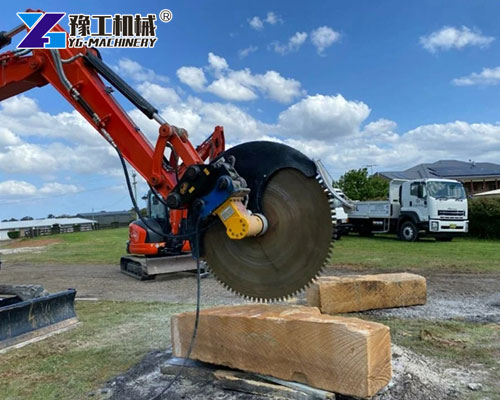
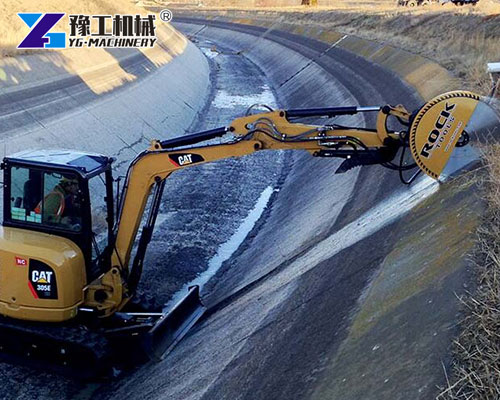
How the Rock Saw Attachment for Excavator Works
The Hydraulic Rock Saw utilizes the excavator’s hydraulic power to drive a rotating cutting blade with diamond or carbide segments. Here’s a simplified explanation of its operation:
- Hydraulic Power Connection: The rock saw attachment connects to the excavator’s hydraulic system.
- High-Torque Motor Activation: Pressurized hydraulic fluid powers a high-torque hydraulic motor within the saw unit.
- Blade Rotation: The hydraulic motor drives the rotation of the large circular cutting blade at an optimal speed.
- Material Engagement: The rotating blade, with its durable cutting segments, is pressed against the rock or concrete.
- Precision Cutting Action: The sharp segments on the rotating blade efficiently cut through the material with precision.
- Depth Control: The excavator arm allows the operator to control the cutting depth and angle for accurate results.
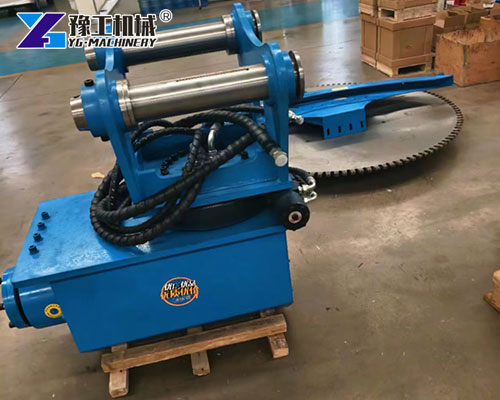
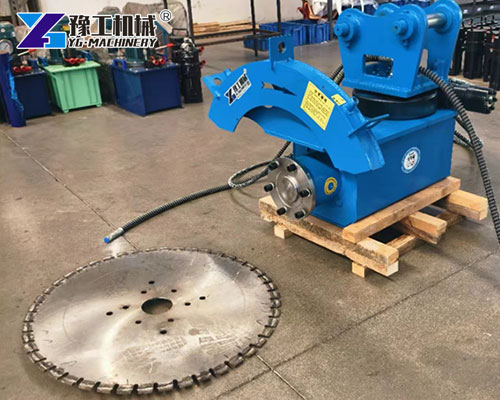
Key Features of a Hydraulic Rock Saw
- High-Torque Hydraulic Motor: Delivers consistent blade speed for efficient cutting performance.
- Heavy-Duty Diamond or Tungsten Blades: Designed to slice through dense rock or reinforced concrete.
- Adjustable Cutting Depth: Allows operators to control cutting precision for different materials.
- Low Vibration Output: Safer for structures and operators, especially in urban environments.
- Quick Coupler Compatibility: Easily attaches to most excavators, reducing setup time.
Applications of a Hydraulic Saw for Excavators
The hydraulic saw for excavators expands the functionality of construction equipment in several high-demand applications:
- Rock Excavation: Precise cutting of rock for trenching, tunneling, and contouring.
- Concrete Cutting: Controlled demolition and removal of concrete structures, walls, and foundations.
- Quarrying and Stone Processing: Extracting and shaping stone blocks with accuracy.
- Underwater Cutting: Specialized models can be used for underwater rock and concrete cutting tasks.
- Demolition Projects: Slices through concrete and reinforced walls with minimal collateral damage.
- Road and Bridge Work: Efficiently cuts asphalt and concrete slabs.
- Foundation and Basement Cutting: Enables controlled excavation next to existing structures.
- Tunnel Openings: Used for shaping and resizing tunnels in mining or infrastructure projects.
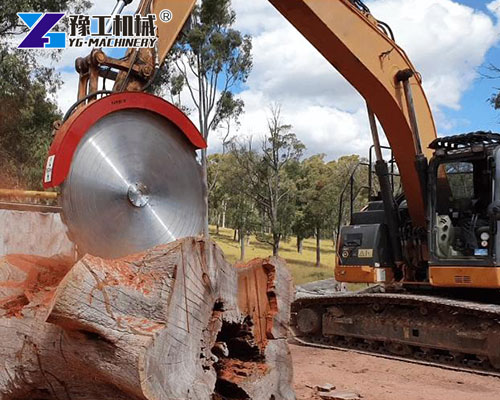
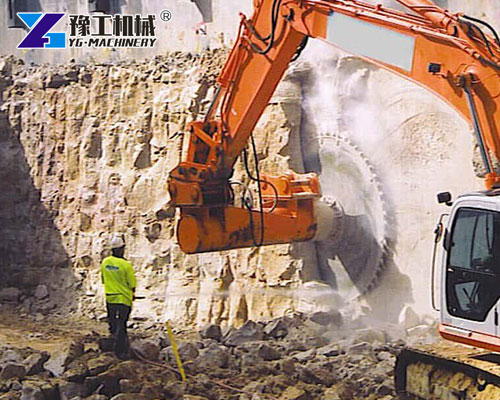
FAQ for the Excavator Rock Saw
Q1: What size excavator is needed for a hydraulic rock saw?
A: Hydraulic rock saws are available for mini to large excavators, typically from 5 to 50+ tons, depending on the blade size and project needs.
Q2: Can it cut through reinforced concrete?
A: Yes, with the proper blade (diamond or tungsten-tipped), the rock saw can cut through heavily reinforced concrete.
Q3: Is it difficult to maintain?
A: Maintenance is minimal—mostly regular blade inspections, lubrication, and checking hydraulic connections.
Q4: How do I choose the right blade?
A: Blade selection depends on the material you’re cutting. Diamond blades are better for concrete and hard stone, while tungsten is effective for softer rock types.
Q5: Is water cooling necessary?
A: While not always required, water cooling is highly recommended to prolong blade life and reduce dust in sensitive areas.
WhatsApp/WeChat/Phone: 86 138 3715 9132

